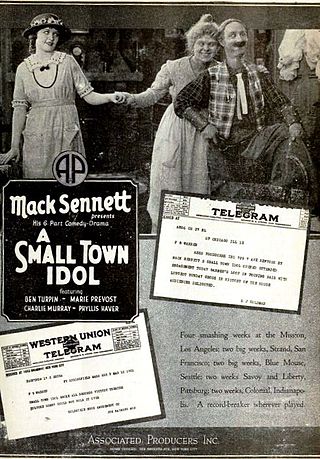
Carmel Myers was an American actress who achieved her greatest successes in silent film.

Joan Marsh was an American child actress in silent films between 1915 and 1921. Later, during the sound era, she resumed her acting career and performed in a variety of films during the 1930s and 1940s.

James Cornelius Kirkwood Sr. was an American actor and director.

Margaret Mann, was a Scottish-American actress.

Barbara Bedford was an American actress who appeared in dozens of silent movies. Her career declined after the introduction of sound, but she continued to appear in small roles until 1945.

Across to Singapore is a 1928 American silent romantic drama film directed by William Nigh, and starring Ramon Novarro, Joan Crawford and Ernest Torrence. The plot involves a love triangle between a woman and two brothers, set on board ship and in Singapore.

The Midshipman is a 1925 American silent romantic drama film directed by Christy Cabanne. The film stars Ramon Novarro and Harriet Hammond. Joan Crawford had an early uncredited role as an extra.

Call of the Flesh is a 1930 American Pre-Code musical film directed by Charles Brabin. The film stars Ramon Novarro, Dorothy Jordan, and Renée Adorée. It featured several songs performed by Novarro and originally included a sequence photographed in Technicolor.

Broken Barriers is a 1924 American silent drama film starring James Kirkwood, Norma Shearer, and Adolphe Menjou. Directed by Reginald Barker, the film is based upon the novel of the same name by Meredith Nicholson.

Rosita is a 1923 silent American historical comedy drama film directed by Ernst Lubitsch and starring Mary Pickford. The film is based upon an 1872 opera Don César de Bazan by Adolphe d'Ennery and Philippe Dumanoir.

Devil-May-Care is a 1929 American Pre-Code musical film directed by Sidney Franklin with a Technicolor sequence of the Albertina Rasch Dancers. The film was released by Metro-Goldwyn-Mayer on December 27, 1929 and was Ramon Novarro's talkie debut.

The Snob is a 1924 American silent drama film directed by Monta Bell. The film starred Norma Shearer and John Gilbert, together with Phyllis Haver, Conrad Nagel, and Hedda Hopper. The film was written by Monta Bell, and was based on the novel The Snob: The Story of a Marriage by Helen Reimensnyder Martin.

Love is an extant American 1920 silent era romance drama film starring Louise Glaum, James Kirkwood, and Joseph Kilgour. Directed by Wesley Ruggles and produced by J. Parker Read, Jr., the screenplay was adapted by Louis Joseph Vance based on a story by Carol Kapleau.

The Pagan is a 1929 synchronized sound romantic drama filmed in Tahiti and produced and distributed by Metro Goldwyn Mayer. While the film has no audible dialog, it was released with a synchronized musical score with sound effects using both the sound-on-disc and sound-on-film process. Both director W.S. Van Dyke and cinematographer Clyde De Vinna had previously visited Tahiti in 1928 to film White Shadows in the South Seas. The Pagan stars Ramón Novarro.

A Wise Fool is a 1921 American silent drama film produced by Famous Players–Lasky and released by Paramount Pictures. This film is based on the novel The Money Master by Sir Gilbert Parker and was directed by George Melford. James Kirkwood is the star of the film. A copy is held at the Library of Congress.

Lady Be Good is a 1928 American silent romantic comedy film directed by Richard Wallace. The film is based on the 1924 musical of the same name by George Gershwin and starred Jack Mulhall and Dorothy Mackaill.

A Small Town Idol is a 1921 American silent feature comedy film produced by Mack Sennett and released through Associated First National. The film stars Ben Turpin and was made and acted by many of the same Sennett personnel from his previous year's Down on the Farm. Sennett and Erle C. Kenton directed.

Forbidden Hours is a 1928 American silent romantic drama film directed by Harry Beaumont as a vehicle for Mexican-born star Ramon Novarro. It was the second of four films to pair Novarro with leading lady Renée Adorée.

Once to Every Woman is a 1920 American silent drama film starring Dorothy Phillips, directed by Allen Holubar and released by Universal Pictures under the name Jewel Production. Supporting actors include Margaret Mann and a then-unknown Rudolph Valentino. It was re-released in 1922 after Valentino's increased popularity. It is now a lost film.

Another Man's Wife is a 1924 American silent drama film directed by Bruce Mitchell and starring James Kirkwood, Lila Lee and Wallace Beery. The story takes part in a ship off Mazatlán in Mexico.




























